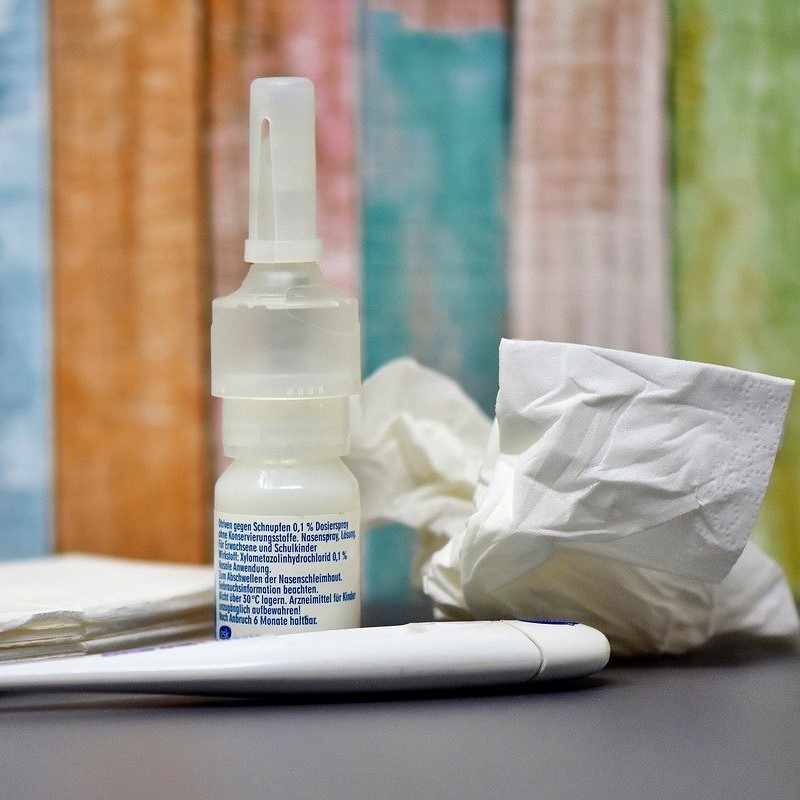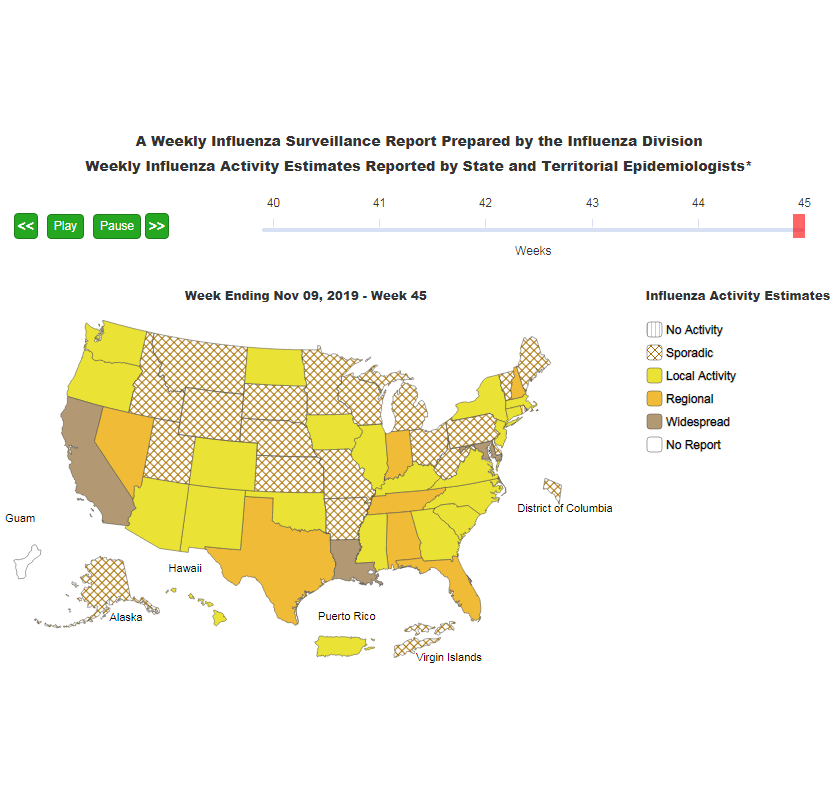The beginning of wintertime is the time to :
- Celebrate the holidays
- Drink hot cocoa by the fire at home
- Prepare for cold and flu season
It’s an excellent time to check up on all the basics of preventing cold and flu transmission:
- Good hand hygiene
- Sanitation protocols (if you run a healthcare or care facility)
- Staying at home away from others if you’re sick and contagious
But how long are you contagious with a cold and flu?
Before Symptoms Show
This is where it gets tricky – a person with a cold and flu is contagious even before they start to show symptoms. The same applies to a virus or the flu – contagion can happen 1-2 days before most symptoms start.
This means before the infected person starts sniffling or sneezing, they’re spreading germs to everyone around them:
- Leaving them on door handles and desk surfaces
- Spreading them into the close air of a crowded subway or a hospital ward
Until They Disappear
And how long is a virus contagious after the symptoms have started? Until those symptoms disappear, in the case of the common cold.
That’s right – it means if you’re still sniffling away after over a week, those germs are still able to spread. Turns out, the answer to “how long are you contagious” is longer than you’d think.
If you’re trying to prevent a contagious disease, like the flu, from spreading, this can be unwelcome news. With such a long contagion period, it can seem like most of the population is carrying around some germ or another during the difficult winter months.
If a Super Spreader gets into the mix too, an epidemic isn’t far behind.
Preventing an Outbreak
How can you keep your hospital, elder care facility, daycare, or school from experiencing an outbreak of contagious disease brought in by an unsuspecting carrier? After all, an epidemic among children, the elderly, or critically ill patients can be devastating.
Education
Education for your staff is the first line of defense. This is also the area where you have the greatest potential for education and control – after all; they’re just as responsible as you are for the care of clients and patients.
Remind your staff:
- If you’re even starting to feel unwell, check your symptoms (preferably by taking a temperature reading at home like schools require in Hong Kong) and don’t come in if you’re sick.
- If they spot a visitor, patient, or client showing signs of an infection, act swiftly but kindly. Depending on your location (an ICU will have a different procedure than a daycare), take whatever action is needed to keep any vulnerable people safe.
- Be especially mindful on very dry, cold days when infections are more likely to spread quickly.
Remind Visitors and Guests
That’s your first line of defense. But your employees have lots of other tasks on their minds too – they’re not full-time infection defenders. They’re also caring for sick patients or children, helping elderly clients through their daily routines, or teaching students.
They can’t do all of this on their own. So this is where further education helps for anyone who visits your facility – visitors, parents, vendors, etc.
Remind visitors and guests:
- Have signs around entrances asking anyone who isn’t feeling well (coughing, sneezing, etc.) to help keep everyone else healthy by staying away until they feel better.
- For regular visitors, like parents at a daycare or school, send out a reminder email periodically with the policy for keeping sick children at home.
- Keep plenty of hand sanitizer at the ready in easily accessible places for guests, so they’re able to use it as often as needed.
Knowledge is Power
By reminding everyone who comes into contact with those you’re caring for that we all have a part to play in preventing the spread of disease, you can build some strong lines of defense against contagious infections.
You can even make education about infection a little bit of fun. If you’re in an area where flu season is peaking or particularly tough this year, add a section to your parent or patient newsletter with informational tidbits like “How long is a cough contagious?” and make prevention into education.
Have a Strong Plan in Place
But don’t just rely on others to prevent contagion – make sure you have a strong plan in place for yourself, with protocols and procedures at the ready. Depending on your facility, this will vary, but it’s critical to have thought out a plan before the flu or other illnesses hit.
Elements to consider:
- What is your policy on staff coming in when they’re not feeling well? Is it widely known?
- What is your policy on visitors or parents coming in when they’re unwell? Are staff aware of the policy and able to implement it?
- What happens when a person you care for – a child in your daycare or school, an older adult in your nursing home, a patient getting an HAI in your hospital – falls ill?
There are many different ways to deal with each of these scenarios, and the right way for you will depend on your unique facility.
But the important thing is not to leave it until you’re already dealing with an epidemic – you want to have a plan and action steps in place well before that happens so your staff is prepared, and your visitors and vendors aren’t caught unawares.
Introducing welloStationX™
But the best way to prevent the spread of an infection like the flu? Install the welloStationX™ in your school, daycare, nursing home, or hospital lobby.
It’s a hands-free, self-service kiosk that scans for an elevated body temperature – the best indicator of a possible infection, showing up before any other symptoms start. It’s discreet, accurate, and doesn’t require a staff member to operate it.
And it prints a handy “I’m wello” sticker for those who scan with a normal body temperature to wear about their day or visit, providing peace of mind to all around them.
Learn More
Interested in learning more about how the welloStationX can help you keep those in your care safe from devastating epidemics before they even start?
Contact wello® today – we’d love to give you a free consult to show you how a welloStationX can work for your facility.

